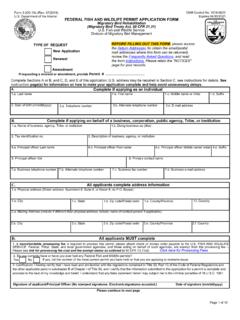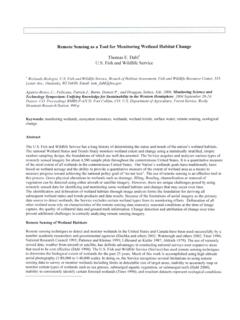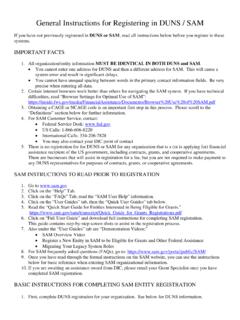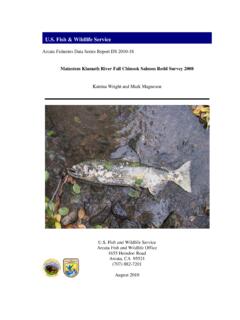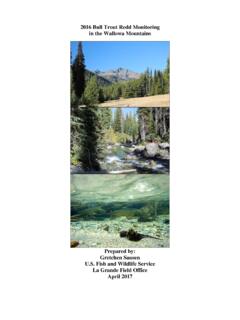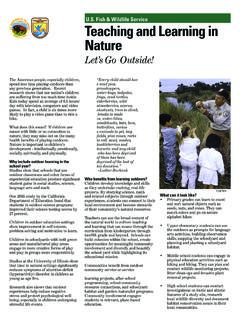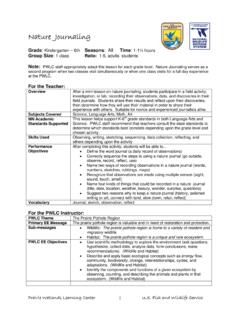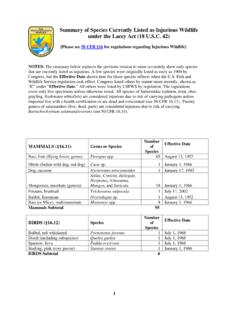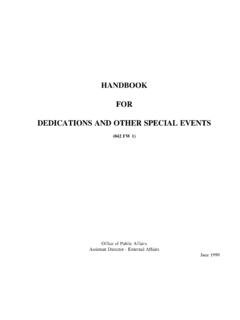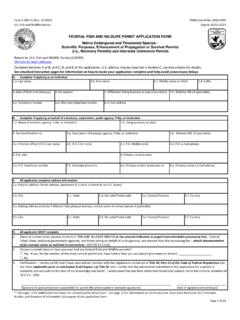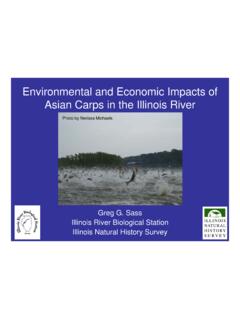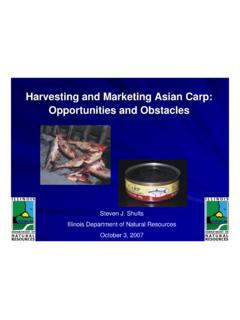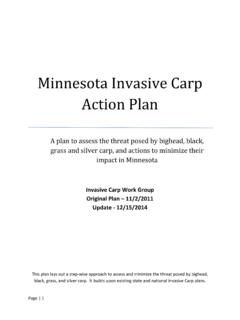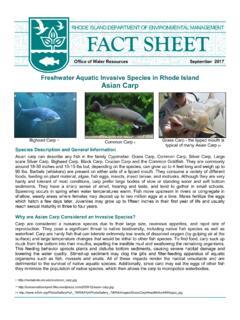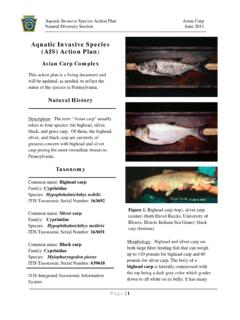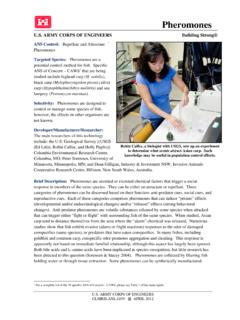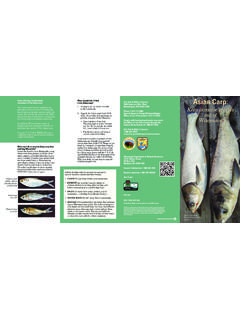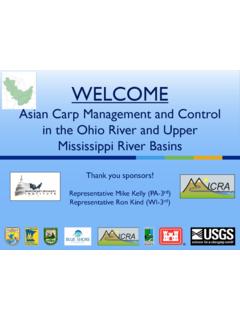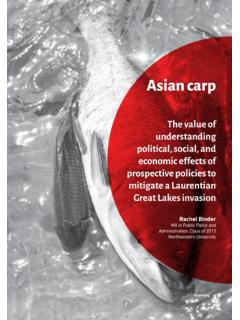Transcription of Region 3 - Great Lakes/Big Rivers Asian Carp - Aquatic ...
1 Great Lakes/Big Rivers Fisheries Fish & Wildlife ServiceRegion 3 - Great Lakes/Big RiversRegion 3 - Great Lakes/Big RiversRegion 3 - Great Lakes/Big RiversRegion 3 - Great Lakes/Big RiversRegion 3 - Great Lakes/Big RiversAsian Carp - Asian Carp - Asian Carp - Asian Carp - Asian Carp - Aquatic Invasive SpeciesAquatic Invasive SpeciesAquatic Invasive SpeciesAquatic Invasive SpeciesAquatic Invasive SpeciesIssues, Program Accomplishments, and Program NeedsIssues, Program Accomplishments, and Program NeedsIssues, Program Accomplishments, and Program NeedsIssues, Program Accomplishments, and Program NeedsIssues, Program Accomplishments, and Program NeedsPathways and Introductions into the United StatesPathways and Introductions into the United StatesPathways and Introductions into the United StatesPathways and Introductions into the United StatesPathways and Introductions into the United StatesBighead, silver, grass, and black carp are native to Asia.
2 Grass carpwere first introduced into the United States in 1963, whereas bighead,silver, and black carp arrived in the 1970s. All four species escaped intothe Mississippi River Basin, and all but the black carp are known to havedeveloped self-sustaining populations. Bighead and grass carp werecaptured in the Great Lakes Basin, but there is no evidence ofreproduction to and EcologyBiology and EcologyBiology and EcologyBiology and EcologyBiology and EcologyBighead carp grow to a maximum of about 60 inches and 110 carp also grow very fast compared to most native fishes in theUnited States.
3 In aquaculture facilities, silver carp have grown to 12pounds in one year, and may grow to a maximum of 39 inches and 60pounds. Grass carp can eat up to 40% of their body weight per day, andgrow to a maximum of 59 inches, 99 pounds, and live up to 21 carp can grow to a maximum of 48 inches, and 71 pounds, on a dietcomposed almost exclusively of snails, mussels, and other and AbundanceDistribution and AbundanceDistribution and AbundanceDistribution and AbundanceDistribution and AbundanceGrass carp inhabit waters within and bordering 45 states, whereasbighead carp have been collected from 18 states, silver carp from 12states.
4 And black carp from only Illinois (some escaped from anaquaculture facility in Missouri). See the maps on the last page for moredetails on the distribution of the four species of Asian from the Illinois Natural History Survey indicates that bigheadcarp abundance has been increasing exponentially in a portion of theUpper Mississippi River. The population has tended to double thereevery year. Bighead carp populations may be increasing at equally fastrates on portions of the Illinois and Missouri Rivers , while silver carpabundance may be increasing at similar rates in all of those by D.
5 RiecksBighead carp-photo by L. LovshinSilver carpBlack carp-photo by B. TaborGrass carpGreat Lakes/Big Rivers Fisheries Program2 Ecological Risks and ImpactsEcological Risks and ImpactsEcological Risks and ImpactsEcological Risks and ImpactsEcological Risks and ImpactsDetailed ecological risk assessments are being completed for bighead,silver, and black carp. Known risks include rapid range expansion andpopulation increase which could decrease abundance of native mussels,other invertebrates, and fishes. Grass carp can eliminate vast areas ofaquatic plants that are important as fish food and spawning and nurseryhabitats.
6 Losses of those habitats can potentially reduce recruitmentand abundance of native fishes. Black carp could reduce abundance ofalready rare snails, mussels, and other invertebrates. Silver carp canjump at least 10 feet out of the water and that behavior has resulted ininjuries to boaters. Collisions between boaters and jumping silver carphave the potential to cause human fatalities.(see picture at left, and video at: )Threats to the Great Lakes BasinThreats to the Great Lakes BasinThreats to the Great Lakes BasinThreats to the Great Lakes BasinThreats to the Great Lakes BasinBighead and silver carp are in the Illinois River, which is connected tothe Great Lakes via the Chicago Sanitary and Ship Canal.
7 Asian carppose the greatest immediate threat to the Great Lakes ecosystem. Anelectrical barrier designed to repel fish was placed in the waterway. It isexperimental and may not be 100% effective but remains the onlydefense against the upstream movement of bighead and silver carp fromthe Illinois River into the Great Lakes. Bighead and silver carp couldcolonize all of the Great Lakes and sustain high-density densities would likely result in declines in abundance of many nativefishes. Presently, bighead and silver carp are known to be within 22miles of the electric barrier which is about 25 miles from Lake species could reach the Great Lakes by swimming through theelectrical barrier, or by release of bait fish or fish sold live for Lakes sport and commercial fisheries are valued at $ billiondollars annually, without including the indirect economic impact of thoseindustries.
8 Degradation of those fisheries would have severe economicimpacts on Great Lakes communities that benefit from the production areas are also at risk from Asian carp. Huntersspend more than $ billion annually on their sport in the Great Lakes,so reduction of waterfowl populations there would decrease theeconomic value to communities that benefit from hunting. The effects ofAsian carp on wetlands in the Prairie Pothole Region would have aneven greater effect on hunting and the economies it niches of grass, bighead, silver, and blackcarp.(From Bardach et al.)-from Bardach, et al. 1972.
9 Aquaculture: TheFarming and Husbandry of Freshwater andMarine Organisms. J. Wiley & PlantsZooplanktonPhytoplanktonSnails and musselsBlack carpBlack carpBlack carpBlack carpBlack carpSilver carpSilver carpSilver carpSilver carpSilver carpBighead carpBighead carpBighead carpBighead carpBighead carpGrass carpGrass carpGrass carpGrass carpGrass carp-USFWSS ilver carp jump up to 10 feet out of the water whenmotorized vessels pass by. This behavior hasresulted in injuries to Lakes/Big Rivers Fisheries Program3 Threat to Other Basins and LocationsThreat to Other Basins and LocationsThreat to Other Basins and LocationsThreat to Other Basins and LocationsThreat to Other Basins and LocationsBighead and silver carp are the Asian carp species that pose thegreatest, immediate threat to basins and reaches of Rivers not yetcolonized.
10 Black carp also poses risk of establishment and ecologicimpact. Grass carp have already become widely established. As largepopulations of Asian carp become established, cumulative effects ofthose species include risk to human safety, reductions of native plantsthat provide spawning and nursery areas for fishes, reduced food fornative fishes and waterfowl, and reductions in dollars for regionaleconomies that rely on fishing, boating, and waterfowl is the Fish and WWhat is the Fish and WWhat is the Fish and WWhat is the Fish and WWhat is the Fish and Wildlife Service Doing?ildlife Service Doing?ildlife Service Doing?
